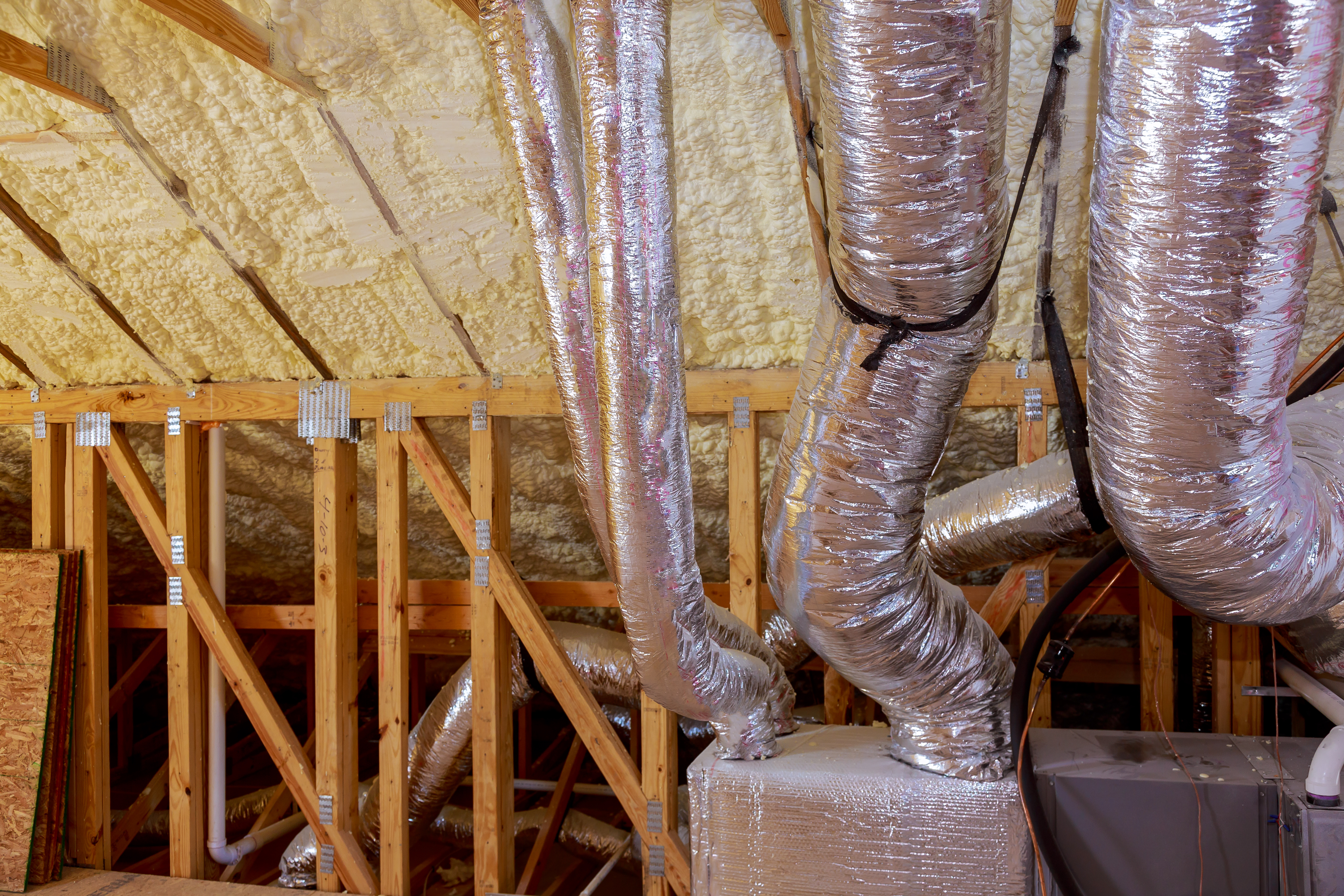
The attic of your home is an important space. It plays a role in how well your roof holds up over the years and also works to keep the rest of your home in good condition. The air in your attic can become stagnant if the area is not properly ventilated. This means it can contain moisture, as well as unpleasant odors. If the air does not flow through the attic sufficiently, the temperature can become too hot, damaging your roof and causing issues inside your home.
Proper Roof VentilationThe vents that are built into the walls and added to the roof will allow some air to flow naturally, but they may not be enough to encourage the amount of airflow that is needed to maintain a constant, more moderate temperature. Turbines and power vents that contain fans can be set to automatically turn on during the hottest parts of the day or manually turned on with a switch inside your home or garage. Being able to improve your roof ventilation can actually lower the cost of your utility bills and increase the lifespan of your roof.
Intake and ExhaustIn order to establish proper airflow, you need to have a way to draw cool air into the attic (intake) and a way to force the hot air out (exhaust). The continual movement of the intake coming in and the exhaust being moved out is the key to maintaining a comfortable atmosphere in your attic. This also works to improve the air quality and reduce the number of mold spores and other types of microbes that try to take up residence in your home. The use of power vents and wind turbines can dramatically improve the efficiency of the intake and exhaust to create positive and consistent airflow.
Consistent AirflowWind can create airflow through your attic, but it isn't consistent. In order to have positive airflow that is constantly moving, you will need to provide some external force. In most cases, wind turbines, box vents, roof fans, or power vents will be able to provide the type of airflow you need to maintain a constant temperature and keep the quality of the air as high as possible. Consistent airflow also prevents moisture from accumulating. Too much moisture can encourage mold growth and actually increase the speed at which rust forms.
Signs That Something Is Wrong with Your Roof VentilationThere are several telltale signs that will help you detect problems with your attic and roof ventilation. Because consistent airflow helps to keep your home cool and comfortable in the hot Las Vegas climate, a good indicator that something is amiss would be your HVAC system constantly trying to maintain a comfortable temperature. If the air in your attic is too hot, that heat will be forced down into your home, making your HVAC system work much harder than it needs to.
If you start to see mold or rust forming on or near the beams in your attic, you may have a problem. Moisture can cause an extensive amount of damage to both your roof and your home's structure. The first sign that your roof ventilation is lacking is an overgrowth of mold and an increase in the amount of rust in your attic.
The above are just the first signs of a problem. Tackling them while they are still manageable is extremely important. Don't procrastinate on fixing the problem. Take the steps you need to improve roof and attic ventilation now and prevent further problems in the future.
Types of VentilationThere are a variety of vents you can use to improve your attic and roof ventilation. Some blend in quite well with the aesthetics in your home, while others may tend to be more visible. When installed correctly, they don't detract from the appearance of your home and will dramatically improve the airflow through your attic.
- Soffit vents – These are lightweight and are placed in the eaves and soffits. They are not sufficient on their own but work extremely well when used with other types of vents.
- Power vents – Power vents use fans to move large amounts of air through your attic. Newer models are equipped with smart thermostats that turn on and off when a certain temperature is reached. Many also come with humidistats to help regulate moisture.
- Box vents – Box vents are usually low-profile and have louvers. They are also referred to as “turtle” vents. They do not have moving parts, so it may take several vents to create the amount of airflow needed to maintain a lower temperature inside your attic.
- Ridge vents – Ridge vents fit over the seam of your roof and allow air to distribute evenly on both sides. Many homeowners prefer these, as they blend in with the rest of the roof, making it hard to tell they are even there.
- Cupola vents – Cupola vents are extremely popular. They can be decorated and will add to the aesthetics of your home. These little gazebo-shaped vents have limited capability when used on their own but are a good choice when combined with other vents.
- Wind turbines – Wind turbines are placed on top of the roof and are shaped much like a chef's hat. They are equipped with a cylinder-shaped turbine that sucks hot air and moisture out of the attic, so it can be replaced with cooler, dryer air. Because of how these turbines are made, it's important that you buy higher-quality units and make sure they are properly maintained.
If you have questions about which type of vent to choose, contact a roofing professional. They will help you find the vents that will work best on your home.
Benefits of Sufficient Attic and Roof Ventilation
With the right vents in place, you will begin to experience many of the benefits of proper attic and roof ventilation. The air quality inside your home will dramatically improve, as will your HVAC unit's ability to maintain a comfortable temperature. It will also be much easier to prevent the growth of mold.
A roofing consultant at First Quality will be able to advise on the vents that will work best for your home. They can also give you tips on how to better maintain your roof so that your attic and home will remain in the best condition possible for as long as you own it. To ensure you have sufficient roof ventilation, schedule a roof inspection today by contacting us at 702-262-7847.

















